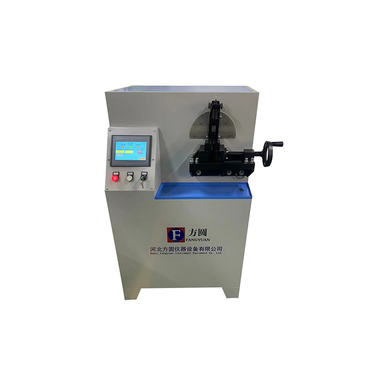flexible cable flexing test equipment factories
Understanding Flexible Cable Flexing Test Equipment Importance and Applications
Flexible cables are essential components in various industries, including electronics, automotive, telecommunications, and industrial machinery. To ensure the reliability and durability of these cables under dynamic conditions, manufacturers often employ flexible cable flexing test equipment. This specialized apparatus simulates real-world bending and movement conditions that cables may encounter in their operational environments.
The Importance of Cable Flexing Tests
Cables are subjected to various mechanical stresses during their lifecycle, especially in applications where they are frequently moved or flexed. This constant bending can lead to wear and tear, resulting in potential failures. Therefore, conducting flexing tests is crucial for understanding how cables behave under repeated movements.
Flexible cable flexing tests can help identify several critical factors
1. Durability Testing ensures that cables can withstand repeated flexing without degrading or failing. 2. Performance Cables that have passed flex testing demonstrate stable performance over their operational life. 3. Safety Regular flexing tests help prevent electrical hazards that arise from cable damage, ensuring the safety of users and equipment. 4. Compliance Many industries require that products meet specific standards, and flexing tests can help confirm compliance with regulatory requirements.
The Design of Flexible Cable Flexing Test Equipment
Flexing test equipment is engineered to mimic the precise conditions cables will face in real-life applications. The equipment typically consists of several key components
- Bending Mechanism This part of the equipment facilitates the repetitive bending motion. It may use a series of rollers or hinges to simulate the natural flexing of cables. - Monitoring Systems Incorporating sensors and monitoring devices can provide real-time feedback on the cable’s condition during the test. These systems track parameters such as strain, temperature, and electrical conductivity. - Control Unit A centralized control unit manages the testing process, allowing operators to set the bending angles, speeds, and cycling numbers. Advanced systems may even offer programmable conditions for specific testing scenarios. - Data Analysis Software After the test, software tools help evaluate the results, providing detailed insights into the cables' performance, longevity, and potential failure points.
flexible cable flexing test equipment factories

Different Types of Flexing Tests
There are various flexing test methods that a testing setup may employ, depending on the specific application and requirements
1. Horizontal Bending Tests Cables are flexed horizontally to assess their performance under lateral stress. 2. Vertical Bending Tests These tests evaluate how well cables handle vertical movements, which can be crucial for overhead applications. 3. Combined Movement Tests Some tests simulate a combination of bending and torsion to represent more complex movement conditions that cables may face, such as in robotics or industrial applications. 4. Temperature Variation Tests Conducting tests at different temperatures can help understand how environmental conditions impact cable performance during flexing.
Industries Benefiting from Cable Flexing Tests
The applicability of flexible cable flexing tests spreads across various industries
- Electronics Manufacturers of electronic devices, from mobile phones to computers, benefit from these tests to ensure the reliability of internal wiring. - Automotive Flexible cables are used throughout vehicles, including in engine compartments and passenger areas. Testing ensures that these cables maintain functionality during vibrations and movements. - Telecommunications With the constant need for robust networking infrastructure, telecom companies use flexing tests to ensure the reliability of cables used in data transmission. - Robotics and Automation In the increasingly automated world, cables that power robotic arms and automated machinery must withstand diverse and complex movements.
Conclusion
Flexible cable flexing test equipment is vital for ensuring the durability, safety, and performance of flexible cables across numerous industries. As technology advances and the demand for reliable electrical components grows, the role of these testing setups will only become more integral, safeguarding both the devices they power and the users who rely on them. By investing in advanced flexing test equipment, manufacturers can assure quality and foster trust in their products, ultimately leading to greater consumer satisfaction and safety.
-
Why the Conductor Resistance Constant Temperature Measurement Machine Redefines Precision
NewsJun.20,2025
-
Reliable Testing Starts Here: Why the High Insulation Resistance Measuring Instrument Is a Must-Have
NewsJun.20,2025
-
Flexible Cable Flexing Test Equipment: The Precision Standard for Cable Durability and Performance Testing
NewsJun.20,2025
-
Digital Measurement Projector: Precision Visualization for Modern Manufacturing
NewsJun.20,2025
-
Computer Control Electronic Tensile Tester: Precision and Power for the Modern Metal Industry
NewsJun.20,2025
-
Cable Spark Tester: Your Ultimate Insulation Assurance for Wire and Cable Testing
NewsJun.20,2025
 Copyright © 2025 Hebei Fangyuan Instrument & Equipment Co.,Ltd. All Rights Reserved. Sitemap | Privacy Policy
Copyright © 2025 Hebei Fangyuan Instrument & Equipment Co.,Ltd. All Rights Reserved. Sitemap | Privacy Policy
